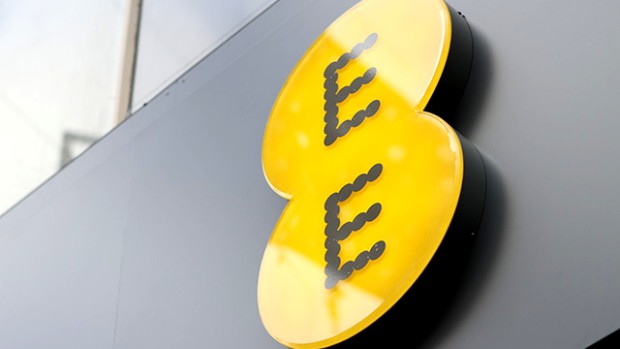A Look At The Tests Carried Out for Analyzing the Situation of UK Mobile Networks
While all mobile network operators in the United Kingdom are going through the transition phase that is switching from 3G to 4G, BT is already in the process of taking over half of the telecom networks. In such a situation, it would be interesting to analyze how the operators in UK are performing. In order to assess the performance, we will consider two methods; one of them is the GWS research and the other is the P3 Benchmark. The latter makes use of specially-endowed vans to carry out the tests. In this piece of analysis, we will break down the facts and figures obtained from the two methods. The researches were carried out a week ago, on real-world factors. Both the methods incorporate unique testing technique.
Performance of EE- As per P3 Benchmark
Like we know, EE is the amalgamation of Orange and T-Mobile, which happened in the year 2010. With such strong backgrounds, the MNO has witnessed impressive growth rate since then. Implementation of the most recent technologies (for example: 4G and HD voice) and network investments on regular basis were the two prime reasons that helped EE to maintain its growth rate.
In the year 2012, Ofcom grabbed the attention of the media and the telecom authority when it allowed EE to utilize its available spectrum to commence 4G services, when all its competitors were still on the way. Since EE was the only operator to offer 4G service ahead of its competitors for more than a year, therefore it allowed the company to expand further in size. In addition, it also enabled EE to spend money on its infrastructure in advance. For all the reasons stated above, it becomes quite obvious why P3 Benchmark described EE as the best. EE scored 366 out of 500 in the test, and achieved the top spot in the ranking list of data, in which the company scored 226 points out of 310. In addition, as per P3 Benchmark, EE achieved 81% as the success rate in most of the major cities.
It is true that the results were awe-inspiring for EE. Nevertheless, things turned out to be different for EE when the test was carried out for voice calls. As per P3 Benchmark, telecom operator Three scored more than EE in the voice calls test. While EE managed to score 140 out of 190, in the same test Three scored 153. In the voice calls test, Vodafone secured the third slot by scoring 94 out of 190, and O2 managed to get the fourth position by scoring 84. For Three, the success rate in big cities and smaller metropolitan regions were 75% and 91% respectively. When P3 Benchmark carried out the same tests in London, once again EE grabbed the top position, not just in terms of calls but data as well. For voice calls, the company scored 88 out of 125 and it was 167 out of 200 for data. Even though Three managed to score the same marks in the voice calls department, but failed miserably in the data section, in which the company scored just 99 out of 200. In London, Vodafone stood second through its overall score of 200. Even though O2 also scored 200 overall, but it lost to Vodafone in the voice calls department, where it scored 42, whereas Vodafone got 57.
What GWS Says about 4G?
As per GWS, which is one of the most reliable experts of mobile network measurement, 4G network is still not very much accessible. As per GWS, the strength of data connectivity was found to be weak on London commuter trains. There are several mobile network testing companies that claim their researches were carried out in real-life situations. Nevertheless, the actual ‘real-life’ scenario can be experienced in the pubs, where smartphone users often complain about calls breaks and poor data connectivity.
For this reason, GWS chose 14 pubs from the capital and visited them to test the four major networks. The outcome of the tests carried out by them revealed that 3G speeds are three times slower when compared to that of Ofcom’s stated figure (in one of the recently submitted report by Ofcom). In addition, the tests showed that the 4G speeds were 3.5 times slower than that of Ofcom’s suggested speed. So, these findings definitely put Ofcom’s tests in question. It also points finger at the reliability of test methods carried out by Ofcom.
On the other hand, EE came up with flying colors in the tests carried out by GWS. In fact, in the tests it was found that EE was the only network available in two pubs in the capital, one of which was nearest to 10 Downing Street.
The 3G average speed experienced by GWS engineers was 2.0 mbps, while the 4G average download speed was actually twice the figure, which was 4.3 mbps. Coming to the Ofcom side, the users in UK enjoyed great speeds, which were- 3G average speed of 6.1 mbps, 4G average speed of 15.1 mbps. After the download speeds, here are the average upload speeds- on 3G it experienced 1.0 mbps and on 4G it was 2.7 mbps. As per these results, another measure can be taken like- to download an image of 4MB the time taken on 3G would be just 34 seconds, whereas the same on 4G it would take around 17 seconds.
Conclusion
Finally, it can be said that the call coverage (3G as well as 4G) is pretty excellent among all popular networks. However, the speed is still low and the factor of trust is still to be improved. There are some questions which are to be answered as well, such as what strategies are to be adopted by Ofcom, and how they can answer to the customers about the test results. In conclusion, users give a thumbs up to it and can be connected to it.








